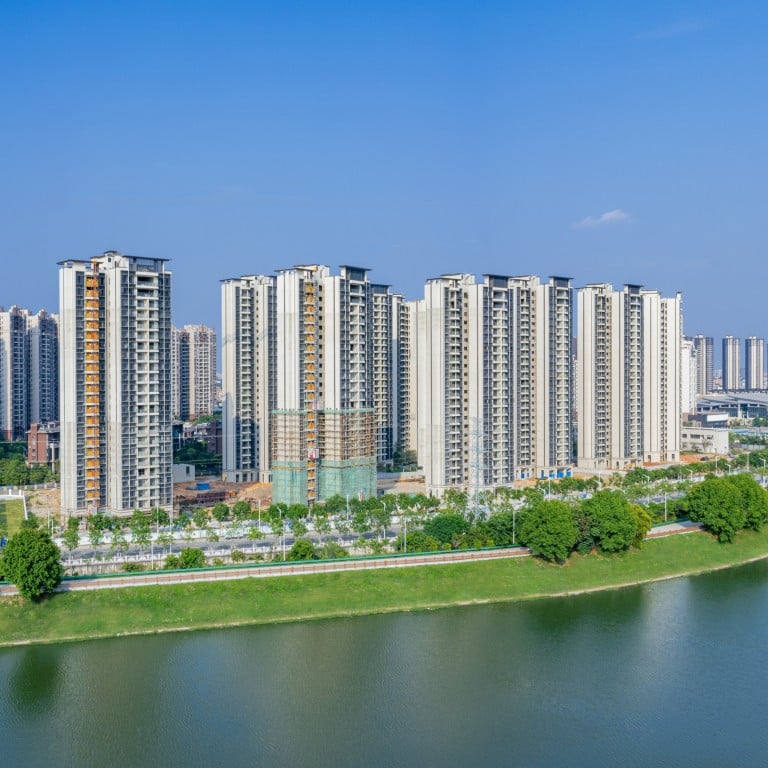
Greater Bay Area property: Hong Kong retirees look to buy homes north of the border amid cheap yuan, policy support
- The falling yuan and a slew of measures to boost the flagging market are making the prospect more attractive, say analysts
- One developer, K Wah International, has set aside a whole building for Hongkongers at its Bayview project in Dongguan
“We go to Shenzhen for food and leisure almost twice a month since the border reopened after the pandemic,” he said.
He likes the slower pace of life in that part of the bay area, and finds the residential neighbourhoods are often spacious and quiet.
Lee and his wife currently live in a 543 square-foot Home Ownership Scheme flat in Chai Wan, and want to sell it and buy a bigger unit in Dongguan for about 2 to 3 million yuan (US$ 270,000 to US$410,000).
“We want to find a place that, having sold our flat, will leave us enough money to enjoy our remaining years,” Lee said.
Like Lee, hundreds of thousands of Hongkongers crossed the border to mainland China for the long weekend that covered the Mid-Autumn Festival and National Day last month, according to Immigration Department figures. Shenzhen, Guangzhou and Dongguan, in particular have become popular destinations, thanks to the short journey by train.
“More Hong Kong people are going north for spending, and there will be a trend for retirees to buy properties in the Greater Bay Area,” Yeung said.
Developers of bay area residential projects also have their sights set on demand from Hong Kong.
The flats have gross floor areas ranging from 1,055 to 1,432 sq ft and prices ranging from HK$2.6 million (US$331,667) to HK$3.8 million, or HK$2,600 per square foot on average, after discounts.
“We wanted to test the water and observe the reaction from Hong Kong homebuyers first,” Yeung added.
Retirees and professionals with businesses in the bay area are the groups expressing the most interest in residential property there, said Dan Pang, assistant general manager at K Wah International (Guangzhou & Dongguan).
Pang said that as the yuan depreciates and major Chinese commercial banks have cut their rates for outstanding home loans, “now is a good time to equip yourself with some yuan assets”.
Thanks to one such relaxation, implemented in September, Hong Kong and Macau residents buying property in mainland bay area cities are now exempt from having to prove years of residence and payment of personal income there.
These cities have also taken measures to make borrowing costs and mortgage repayments cheaper.
The Greater Bay Area primary residential market recorded about 222,000 transactions in the first half of 2023, an improvement of 16 per cent year-on-year. That came in the context of a low base in 2022 under the pandemic restrictions and a spike in new project launches in the first six months of this year, Cushman & Wakefield said in a recent report.
Though transactions have increased since buying restrictions were loosened, Alva To, Cushman & Wakefield’s vice-president, Greater China, is not convinced Hongkongers are ready to take the plunge.
“Will it [policy relaxation] make Hong Kong homebuyers go there and purchase?”
To said yuan depreciation is not the top priority for Hong Kong buyers. They are more concerned about the outlook for the mainland’s property market as developers wrestle with a debt crisis, and the underperforming economy.
Hongkongers will not buy properties when prices are falling, so the market outlook is very important, To said.
“There have been policies introduced since September that will improve buyer sentiment as they expect the market will have a good turn,” he said.
“But now the market is quiet, both in Hong Kong and mainland China, there is no incentive to buy properties at the moment.”
Martin Wong, Knight Frank’s head of research and consultancy for Greater China, said with the government gradually relaxing mortgage rules and housing policy, and Hongkongers resuming their travel, bay area home prices are likely to rebound in the second half by up to 2 per cent.
Prices of new homes in tier-two cities fell by 0.3 per cent from a year earlier, a slight improvement on the 0.4 per cent retreat in August.


